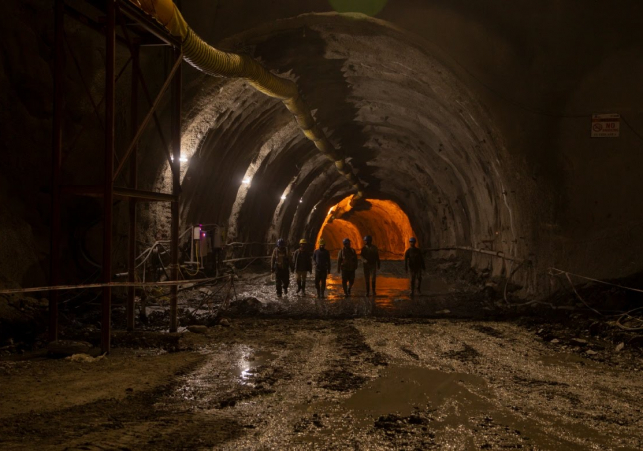

For around six months of the year, Ladakh is reliant on aviation supplies because it shares de facto borders with Pakistan and China.
Hundreds of people are working on an ambitious project to drill tunnels and build bridges to connect the Kashmir Valley with Ladakh, a freezing, desert region isolated for half of the year due to enormous snowfall, high in a rocky Himalayan mountain range in Indian-administered Kashmir.
Ladakh, which is strategically vital, shares de facto borders with Pakistan and China and is currently reliant on aviation supplies for around six months of the year.
Officials say the first of four tunnels, measuring 6.5 kilometres (four miles), is now complete and will make Sonamarg accessible during the winter months for the first time.
Before crossing the rugged Zojila mountain pass into Ladakh, Sonamarg marks the end of the conifer-clad mountains.
The $932 million project’s last tunnel, about 14 kilometres long (nine miles), will avoid the difficult Zojila pass and connect Sonamarg and Ladakh.
The $932 million project’s last tunnel, about 14 kilometres long (nine miles), will avoid the difficult Zojila pass and connect Sonamarg and Ladakh.
At 11,500 feet, it will be India’s longest and highest tunnel, according to officials (3,485 metres).
“It’s not like any other building project.” It’s excellent learning, Tariq Ahmed Lone, one of the workers, said as he assisted at a drilling machine.
For more than 16 months, Indian and Chinese forces have been locked in a sometimes violent stalemate in the Karakoram mountains of Ladakh along their de facto boundary, known as the Line of Actual Control.
Tens of thousands of soldiers from both countries have been stationed there, backed up by artillery, tanks, and fighter jets.
The tunnel project is considered critically important for Ladakh by Indian military planners. According to experts, it will provide the military with logistical flexibility as well as operational and strategic mobility.
Politicians see the project as an opportunity as well.
The Zojila section of the tunnel is scheduled to open in 2026, but India’s road transport and highways minister, Nitin Gadkari, said on a visit to the site on Tuesday that he expects the project will be completed before the general election in 2024.
“I know it’s a difficult task, but I am convinced they will complete it on time,” Gadkari added. “Of course, we’d like to have it finished before the elections.”
According to South Block sources, defence minister Rajnath Singh and top officials chose the BRO concept over the National Highways and Infrastructure Development Corporation Limited (NHIDCL) proposal, which called for a completely new road alignment with a 13.5-kilometer tunnel under Shinkun La.
Due to the simple design and requirement of basic electromechanical fittings, it is estimated that the entire cost of the BRO tunnel construction will be roughly 1,000 crore. The 4.25-kilometer tunnel will be ventilated longitudinally with banana fans, which use very little electricity and have low operating costs.
The Darcha-Padum-Nimmu road is 297 kilometres long, with 100 kilometres previously converted to two lanes and blacktopped by the BRO last year during the height of the India-China border spat. With the new route, the distance between Manali and Leh will remain the same, but the axis will be completely snow-free all year, allowing troops and equipment to feed the Ladakh, Kargil, and Siachen sectors.
Even after the building of the Atal tunnel through Rohtang pass, the current Manali-Sarchu-Upshi-Leh route traverses across four high mountain passes of roughly 5,000 metres in height and is snowed for at least two to three months during the winter.
Baralacha La (16500 feet), Nakee La (15547 feet), Lachung La (16616 feet), and Tanglang La are the four crossings on the current Manali-Leh route (17480 feet).